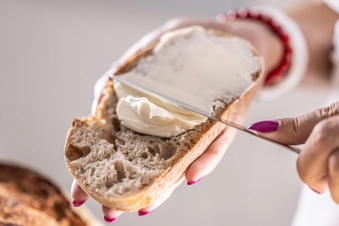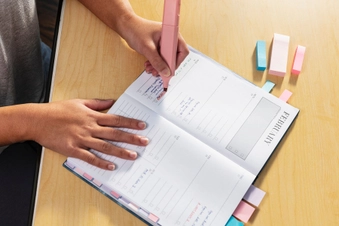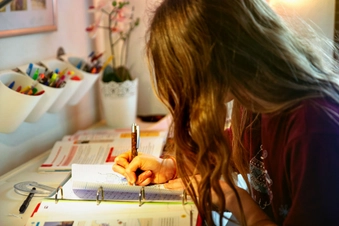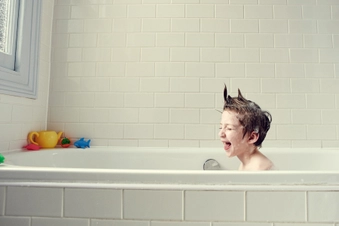Tips for Smoother Days With Childhood ADHD

Prep the Night Before
If you have a child with attention deficit hyperactivity disorder (ADHD), the morning of a busy day will be more peaceful if you plan the night before. Lay out clothes, pack lunches and backpacks, check homework and projects, sign paperwork, and have everyone bathe or shower. To set up a successful day, hang up schedules or checklists that break tasks into easy-to-manage steps.

Make Breakfast Quick
Even on a harried morning, don’t skip breakfast. Have some speedy options up your sleeve to make sure your child has good nutrition at the start of the day. Some ideas include toast with peanut butter or cream cheese, a toasted ham-and-cheese sandwich, fruit with a dollop of yogurt, or scrambled eggs with tomato, mushrooms, or cheese. Add some vitamin C with a smoothie or a glass of fresh fruit juice.

Color-Code Calendars
A school calendar with lots of space for writing and color-coding is super helpful for kids who have ADHD. Ditto calendars for after-school activities and social dates. Organization apps can be valuable too. You can share digital info with teachers and other key people and also receive handy notifications.

Record Classes
Find out if your child can use a recording and note dictation app in class. You’ll likely need to check in with the school about assistive technology guidelines. If the app requires a cellphone and they’re not allowed, consult school administration about special usage. If your child has an individualized education program (IEP), ask the coordinators.

Keep Everything Together
A one-binder system can work like magic to connect your child’s school day and home. Your child can keep school assignments, homework, and classroom paperwork in one place. The binder goes to each class and then home with your child, with papers intact. Choose a different-colored folder for each subject.

Keep Tabs on Clutter
A tidy, organized environment reduces stress and keeps all your planning efforts flowing smoothly. This can seem a tall order for a busy household. Start by cutting clutter with special "drop-off spots" for key items that need a temporary holding space. This ensures nothing goes missing.

Have a Healthy Snack Waiting
No matter what you pack or what’s on the school lunch menu, it can be hard to tell what your child eats. Make a nutritious, tasty snack for when your child gets home. Instead of a processed snack that’s high in sugar and fat, try an orange with a slice of ham or turkey, natural peanut butter on apple slices or whole-grain crackers, or a banana and a handful of omega-3-packed walnuts.

Make Time for After-School Activities
No one wants their child to be over-scheduled, especially with ADHD in play. An activity or two after school is a great way for your child to make friends and hone social skills, though. Scout troops, sports teams, and other supervised activities teach not only new things, but offer chances to positively interact with peers.

Set Up for Homework Success
Work with your child to help create a special homework space. Gather all the tools they’ll need, from extra pencils to calculators to color-coded folders. Have a duplicate set of materials they use at school, including books, if possible. Remove anything distracting from the environment, like a TV or pets. If your child studies in different spaces, make a homework basket that can travel.

Break for Exercise
Kids need to blow off steam after a long day, just as adults do. Before homework, if your child is wound up, let them run around a bit and have fun with you or their friends. Experts note that about half an hour of exercise can make 45 minutes to an hour of focus time possible for homework afterward.

Keep a Nighttime Routine
Maintain a consistent routine for the hour before bed every night. Start by having a set bedtime. Ban electronics from bedrooms. Have quiet time before bed that includes a bath, drawing or reading, or whatever helps calm your child’s mind and helps them unwind. A cup of warm vanilla milk with honey is not only a tasty ritual, but it can help promote sleep.

Call on Outside Help
It’s not easy to give your child with ADHD all the attention they need, especially if you have jobs and other children in the household. A counselor or psychologist with ADHD experience can not only help your child manage ADHD-related challenges, but even help them organize backpacks and show them how to create systems and spaces that let them thrive.
Show Sources
IMAGES PROVIDED BY:
- E+/Getty Images
- Moment/Getty Images
- iStock/Getty Images
- E+/Getty Images
- Moment/Getty Images
- DigitalVision/Getty Images
- iStock/Getty Images
- iStock/Getty Images
- DigitalVision/Getty Images
- E+/Getty Images
- Stone/Getty Images
- E+/Getty Images
SOURCES:
Child Mind Institute: "School Mornings Without the Stress," "School Success Kit for Kids With ADHD."
ADHD Foundation: "Breakfast and ADHD: A Guide for Parents."
University Hospitals: "10 Tips for Supporting a Child With ADHD."
ADDitude: "9 Strategies for Stress-Free Evenings," "How to Get Kids to Sleep: Bedtime Strategies for Buzzing ADHD Brains."
The Royal Children’s Hospital Melbourne: "ADHD – Ways to Help Children at School and Home."
Children and Adults with Attention-Deficit/Hyperactivity Disorder: "Homework Help for ADHD."
Nemours Kids Health: "Therapy for ADHD."